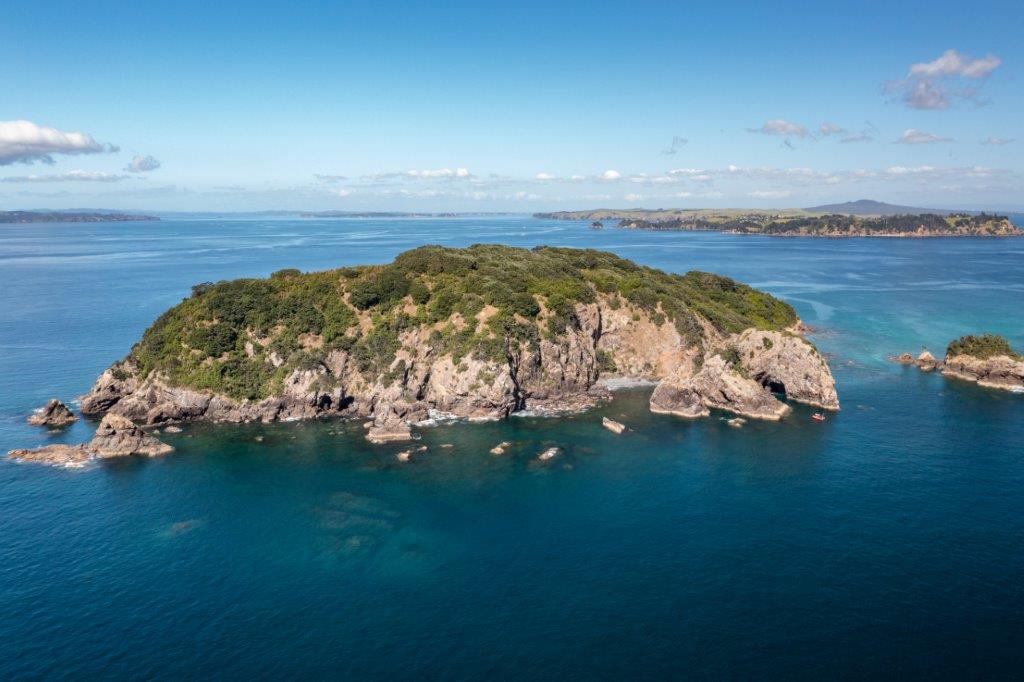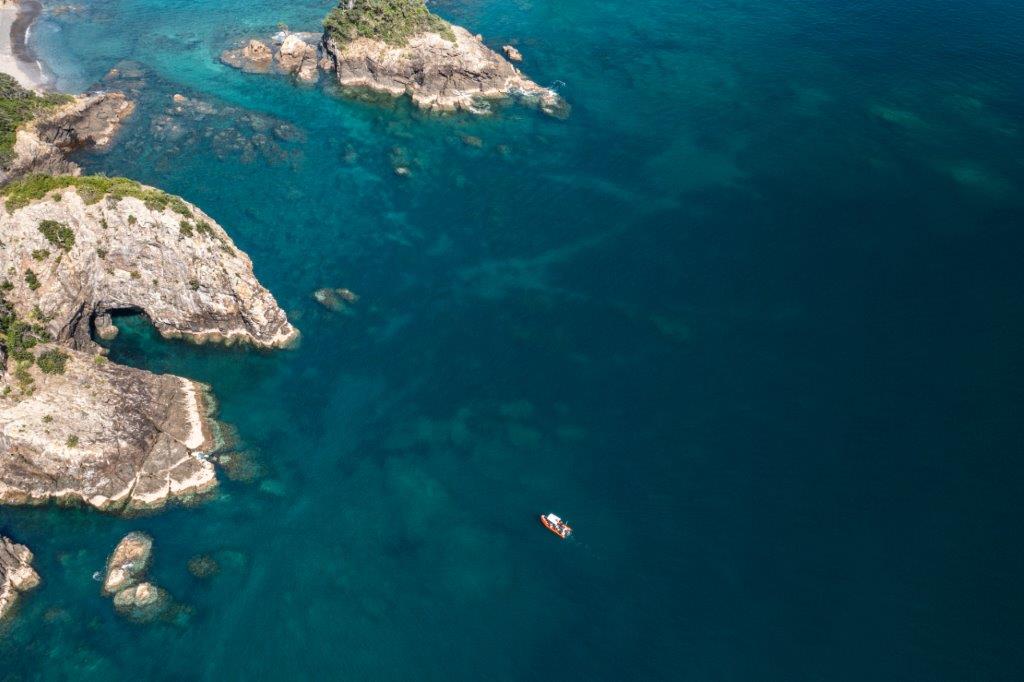The Noises hold a very special interest for seabird lovers. Being home to at least…
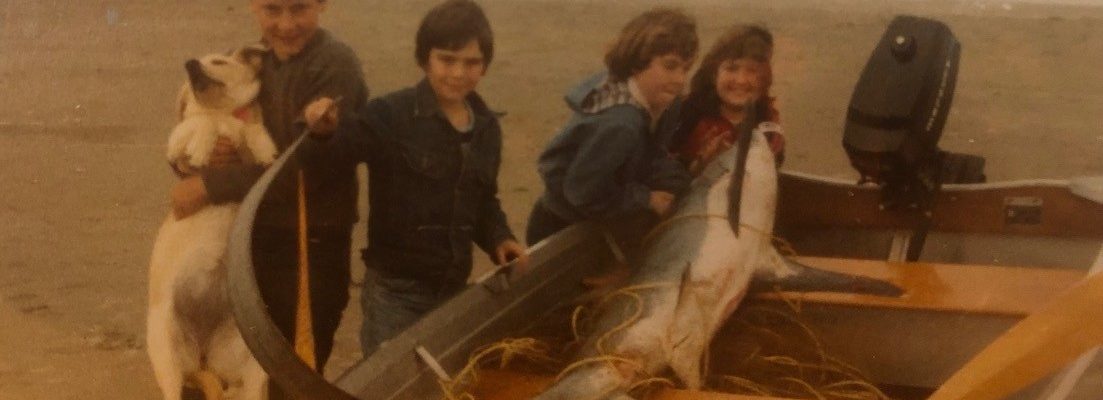
A tale of three fishers
Once upon a time, for many kiwis, being in a boat on the ocean was all about fishing, fishing and more fishing. Many of us have photo albums of old holiday snaps, where Stubbies-clad dads stand beside sunburnt kids, all beaming over a swag of fish, their trophies arranged just so on the summer brown grass. So many fish, so many species, and far more than could be eaten comfortably by even the largest family.
But that was then, and today many of us look at those photographs and feel regret, not pride because the tide has turned.
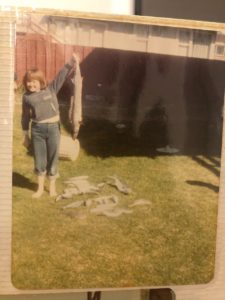
Admittedly, not everyone sees the need for change, and billboards still advertise fishing gear with taglines like, “Fish Don’t Stand A Chance!” On a favourable day, it’s not uncommon to see hordes of boats dotted around the shores of the rock stacks, reefs and islands of The Noises, filled with people all busily fishing.
Sue Neureuter recalls how her dad Brian was well ahead of his time with regards to limiting your catch, as opposed to catching your limit. When she, Rod and Zoe went fishing back in the ‘60s and ‘70s, if they caught more than they could eat, they’d have to sit at the table until every last morsel was consumed. “And you sure learn not to overfish more than twice, when that’s the kaupapa.”
In recent years, Brian’s stance has become more mainstream, and to find out how anglers are evolving, we spoke to three once-enthusiastic fisher-people who are consciously viewing the ocean through a new lens.
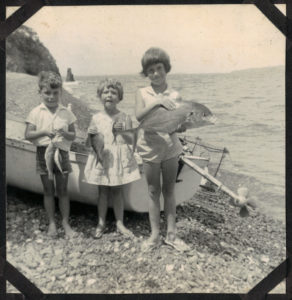
Henry, a regular on Rakino, grew up on a farm in the South Island, where he remembers catching trout and salmon in the creeks and rivers. “We grew up eating lamb and mutton every day – so to have fish was a big deal.” Although Henry didn’t fish in the sea until he was in his 20s. Arriving in Auckland in the ‘90s, when Henry first fished in the Hauraki Gulf, most anglers he knew aimed, “to fill the bin. To get 20+ fish, then share the fish round friends, and eat fish for days. I remember massive schools of kahawai from Motutapu to Rakino. Snapper were easier to catch back then too, yet today while there are many more lures and techniques that make it easier for fisherman, it’s much harder to catch them, and that’s because there is definitely less fish than 20 years ago.”
Which means Henry’s philosophy has changed. “After learning more about the impact humans have had on the Hauraki Gulf, I’m not going to fill a bin with fish. I’ve also learnt, without big snapper and crayfish, kina get out of control. Snorkelling through kina barrens on my doorstep makes it very real, and much easier for me to put big fish back, or just not go fishing at all. Of course catching your own fish and eating it is a great thing to do, and to feed visitors from the sea, but we just must do it less. My kids know so much more about eco-systems and the damage humans are doing. They like fishing, but they understand we need to do things differently if we want to fish into the future.”
A little further north, Peter’s family have had a bach on Kawau Island for several generations and he’s been going there since he was three-months-old. As a teen in the holidays, Peter would rise early and row out in his dinghy to the middle of Vivian Bay to see what he could catch. “I didn’t really even know how to fish. I’d just strap a bit of old bait to a line and I’d catch a fish. Snapper, john dory, trevally, gurnard. But you don’t see those species any more, it’s really just snapper. And the more I’ve learnt about the state of the Hauraki Gulf, the less I tend to fish. I might have all the gear, but these days I maybe only fish once or twice over the summer, because however much I might enjoy eating fish fresh from the ocean, it’s getting harder to justify.”
Telling a similar story from a different island, Tim grew up in central Taranaki, a long way from the sea. “When I was young, I caught eels, but I didn’t learn to catch snapper or crayfish until 20 years ago, when I bought a place on Barrier, and taught myself. I became very good at it.” But these days, Tim doesn’t see the big crays he used to see, and he rarely takes one. “Another thing I’ve noticed in the last couple of years, I’ve seen vibrant kelp forest become kina barrens, and all the cray holes are empty. This is very sad, when you have come to know a place intimately.”
Tim now calls Aotea home and he takes pride in fishing with respect, taking nothing more than is needed for the table. “The act of fishing brings me into a relationship with place and it fosters humility and wonder. I clean my fish with respect. I eat fish with respect. Nothing is wasted. But I do believe a collective slowing down is needed. “
A tale of three fishers, all of whom have seen change and are changing because of it. Hopefully it’s catching, this philosophy of catching less, and the waters around Tīkapa Moana Te Moananui-ā-Toi will flourish because of it. And on a good day, when conditions are favourable, of course we’ll still see a fair few boats around The Noises but, instead of fishing, the people onboard will be marvelling at birds working, or watching dolphins and even whales. Snorkellers and SCUBA divers will be thrilled to swim with the abundant marine life, and appreciation will supersede extraction as people’s motivation for being on the ocean.


